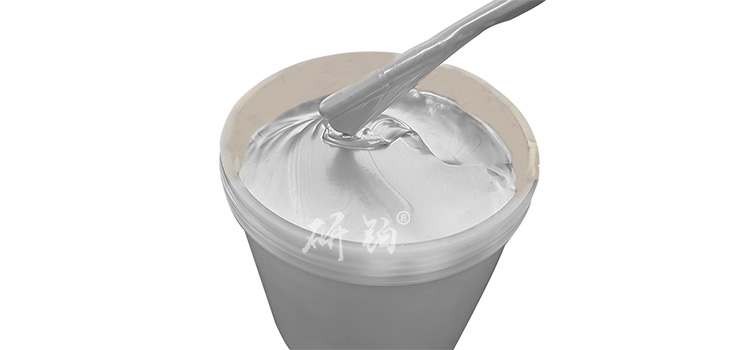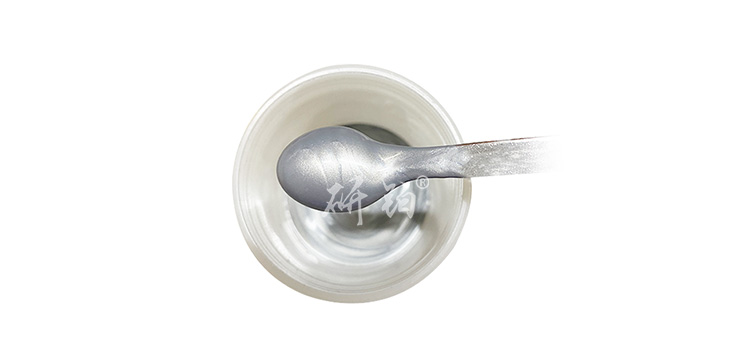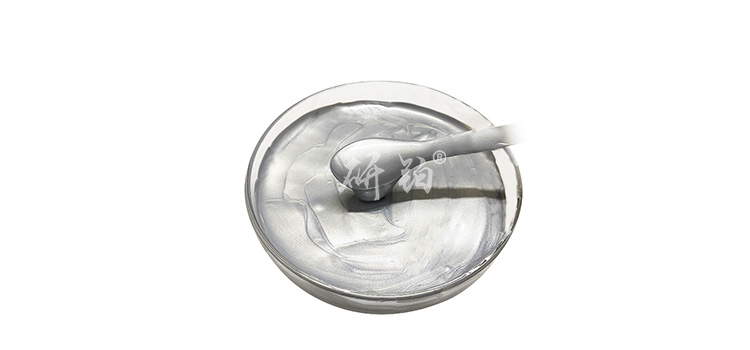

Hotline:0755-22277778
Tel:0755-22277778
Mobile:13826586185(Mr.Duan)
Fax:0755-22277776
E-mail:duanlian@xianjinyuan.cn
conductive pasteIt is the foundation for the development of electronic components and a key material for packaging, electrodes, and interconnects. With the development of electronic components towards miniaturization, precision, and flexibility, research on nanoscale metal conductive fillers is being carried out both domestically and internationally. Among them,Nano silver filled conductive pasteBecoming a research hotspot in this field. There is no unified conclusion on whether nano silver as a conductive filler has a positive or negative impact on the properties of silver paste. It is generally believed that when nano silver is filled into the matrix, the contact area between particles is small, and the number of filler particles increases, resulting in an increase in contact resistance. Only when the distance between nanosilver particles is within a certain range, the conductivity is enhanced due to tunneling effects and other factors. This is closely related to its particle size and morphology, surface properties, and sintering behavior.
Electrically conductive paste is the foundation for the development of electronic components and a key material for packaging, electrodes, and interconnects. It is mainly used in various fields of the electronic industry, such as surface packaging technology and sensitive components. In recent years, with the rapid development of the information industry, devices have been moving towards miniaturization, precision, and flexibility. Many domestic and foreign research institutions have shown strong interest in the development and application of conductive pastes.
Conductive paste generally consists of 2-3 basic parts, namely conductive phase (gold, silver, copper, nickel, tin bismuth alloy, etc.), organic carrier (organic resin and solvent), and/or permanent adhesive (silicate glass, etc.). According to the properties of the composition of conductive paste, conductive paste is generally divided intoConductive paste with models, conductive paste without models, and composite conductive pasteAmong them, composite conductive paste uses conductive metal particles as the conductive phase and polymer as the bonding phase, which has excellent conductivity and mechanical properties. The processing process is relatively simple, with strong repeatability and conductivity stability, and a long storage stability period. It has high practicality and broad application prospects. Currently, most conductive pastes on the market are of this type.

Silver is widely used as a conductive filler due to its high conductivity, excellent physical and chemical properties, acceptable price, and conductive properties of its oxides.Conductive silver pasteIt is developing towards simpler processes, stronger performance, higher reliability, and lower costs. At present, the conductive phase in conductive silver paste is mainly micron or submicron silver powder, which can no longer meet the requirements of new technologies such as low-temperature sintering and multi-layer wiring. In recent years, research on the nanomaterialization of conductive pastes and precious metals has been carried out both domestically and internationally, and has formed a certain degree of industrialization. Due to the surface effect and small size effect of nanosilver, using nanosilver as a conductive filler can improve conductivity and thermal conductivity; Reduce silver usage and lower production costs; Reduce the curing temperature so that silver paste can be applied to PET templates, flexible substrates, etc; The surface of the layer for welding metal and ceramic is very smooth; Improve the shear strength of conductive adhesive, etc. In addition to the obvious advantages mentioned above, there are also problems such as poor dispersion stability of the slurry, easy aggregation and sedimentation of nano silver after placement, unstable conductivity, and short adaptation period.
At present,Nano silver filled conductive pasteThe preparation method of nano silver paste is similar to that of micro silver slurry, mainly by dispersing commercially available or self-made nano silver in dry powder or liquid form, single or mixed with micro silver flakes, and dispersing them into organic carriers through mechanical stirring, ultrasonic dispersion, high-energy ball milling and other methods.
The production process of conductive silver paste
Silver powder is classified according to particle size, with an average particle size of less than 0.1 μ m (100nm) classified as nano silver powder; 0.1 μ m<Dav (average particle size)<10.0 μ m is silver micro powder; Dav (average particle size)>10.0 μ m is considered coarse silver powder. There are many methods for preparing powders. For silver, physical methods (plasma, atomization) and chemical methods (silver nitrate thermal decomposition, liquid-phase reduction) can be used in one go. Due to silver being a precious metal that is easily reduced back to its elemental state, liquid-phase reduction is currently the most important method for preparing silver powder. Silver salts (such as silver nitrate) are dissolved in water, and chemical reducing agents (such as hydrazine hydrate) are added to deposit silver powder. After washing and drying, silver reducing powder is obtained with an average particle size between 0.1-10.0 μ m. The selection of reducing agents, control of reaction conditions, and use of interfacial active agents can prepare silver micro powders with different physical and chemical properties (particle morphology, dispersion degree, average particle size and particle size distribution, specific surface area, bulk density, tap density, grain size, crystallinity, etc.). The reduced powder can be mechanically processed (ball milled, etc.) to obtain polished silver powder and silver flake.

According to the use of silver powder in silver conductor paste. The silver powder used in the electronics industry is now classified into seven categories:
①High temperature sintered silver conductive pasteUse high fever activated silver powder
② Highly dispersed silver powder for high-temperature sintered silver conductive paste
③ Highly conductive reduced silver powder, silver powder for electronic industry
④ Bright silver powder
⑤ Flake silver powder
⑥ Nano silver powder
⑦ Coarse silver powder
① Class ② and ③ are collectively referred to as silver micro powder (or reducing powder), while Class ⑥ silver powder is used insilver conductive pasteIn the process of exploration, Class ⑦ coarse silver powder is mainly used in electrical applications such as silver alloys.
The largest types of silver paste currently in use include:
① Low temperature silver paste for PET based film switches and flexible circuit boards
② Slurry for single board ceramic capacitors
③ Silver paste for varistors and thermistors
④Silver paste for piezoelectric ceramics
⑤ Silver electrode paste for carbon film potentiometer
The main applications of low-temperature and room temperature curing conductive silver adhesive include low curing temperature, extremely high bonding strength, stable electrical performance, and suitability for screen printing. Suitable for conductive and thermal bonding in ambient temperature curing welding applications, such as quartz crystals, infrared pyroelectric detectors, piezoelectric ceramics, potentiometers, flash lamps, as well as shielding and circuit repairs. It can also be used for conductive bonding in the wireless instrument industry; It can also replace solder paste to achieve conductive bonding.



Advanced Institute (Shenzhen) Technology Co., Ltd, © two thousand and twenty-onewww.avanzado.cn. All rights reservedGuangdong ICP No. 2021051947-1 © two thousand and twenty-onewww.xianjinyuan.cn. All rights reservedGuangdong ICP No. 2021051947-2